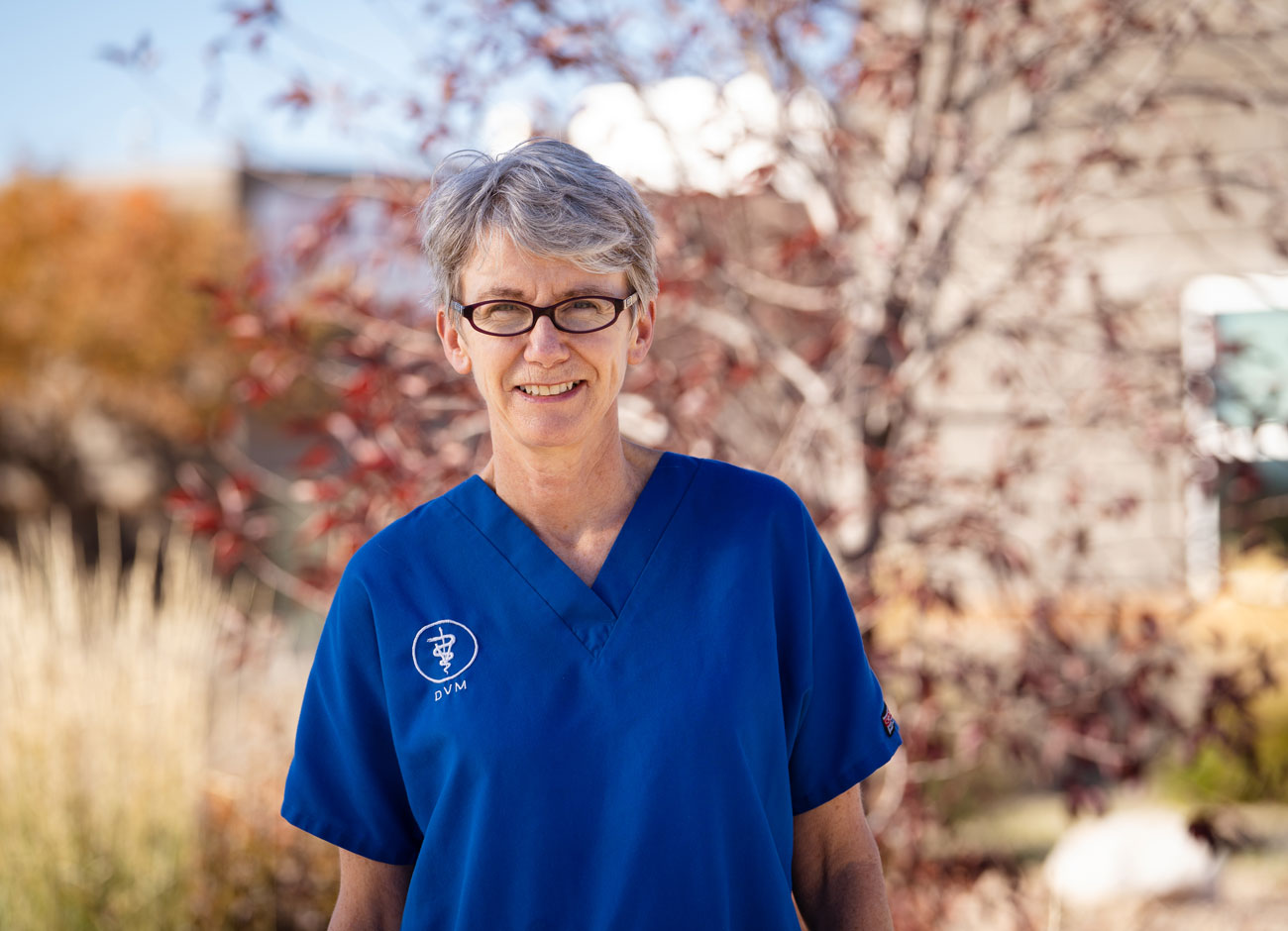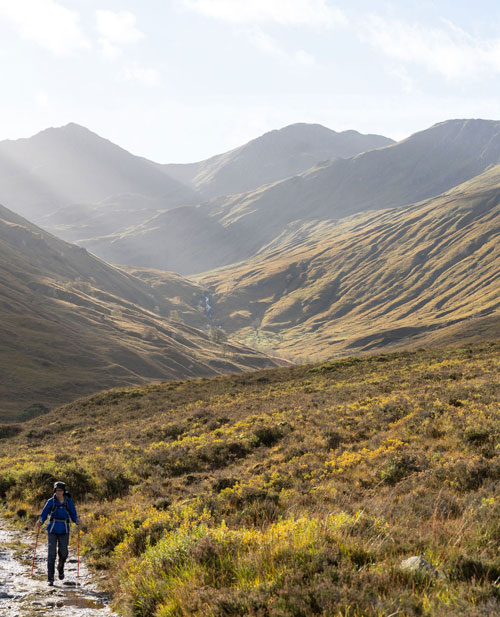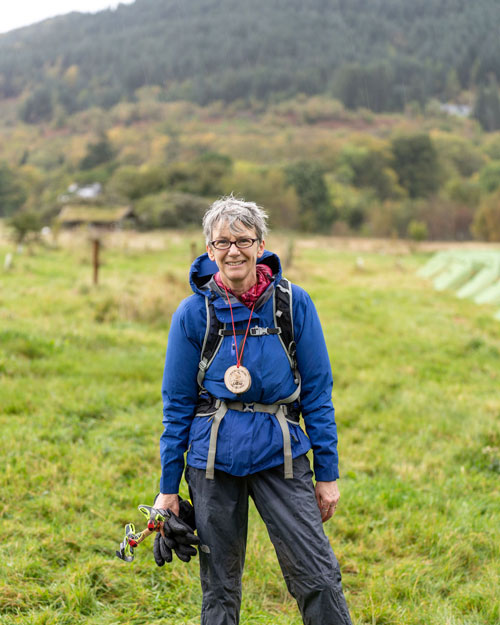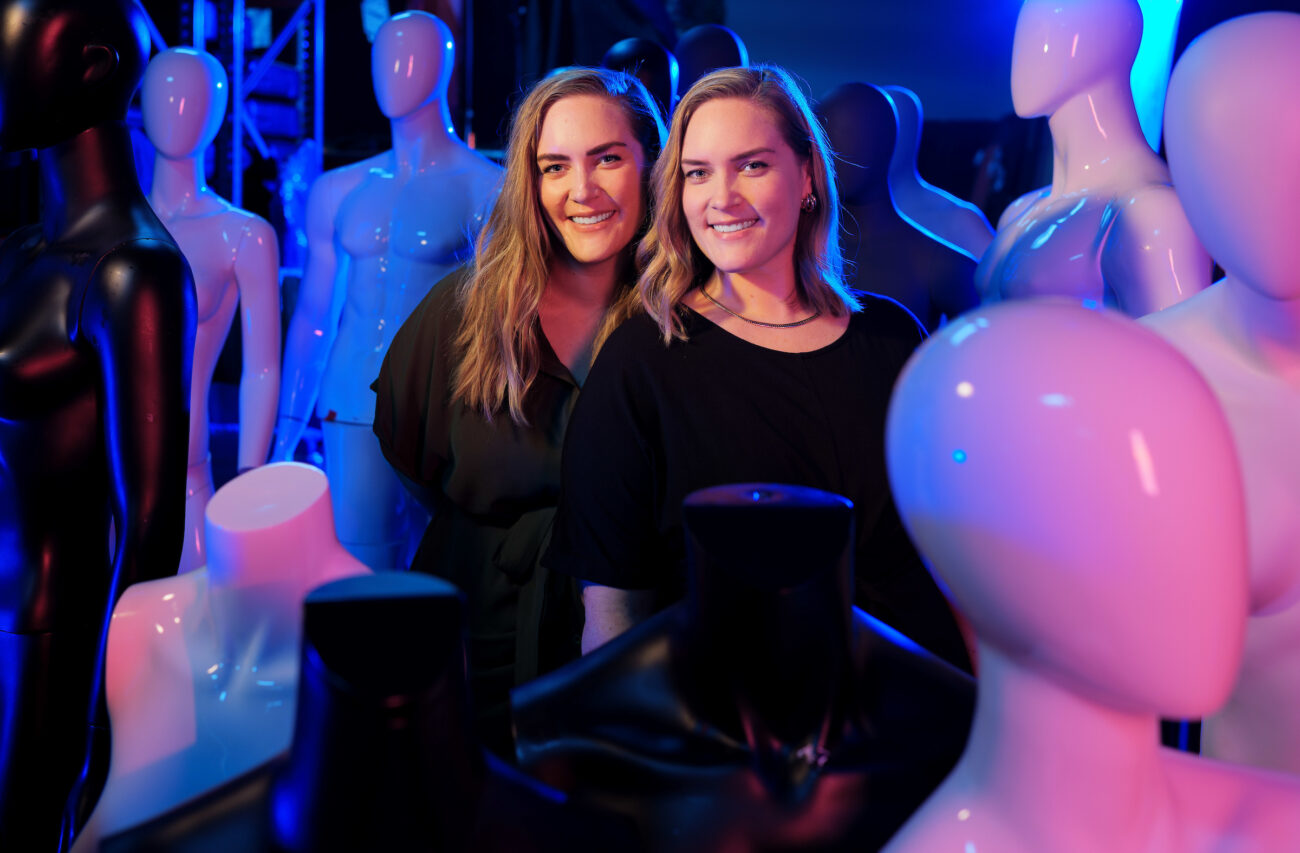Running Like Jane

There is a study that has become apocryphal across long-distance running communities.
It tried to answer the most common question distance runners get from normal pedestrian people: “What do you think about when you are running?”
In summary, the 1977 study found that competitive runners embrace the discomfort and monitor their bodily functions like gauges on a race car. The more leisurely joggers try to disassociate from their efforts by thinking of anything but running. It might be flowers and puppies, or puppies running through flowers. One of the more memorable strategies was a guy who claimed he imagined building a house brick by brick while he was running a marathon. This study was published before earbuds, motivational playlists, and smart watches. More current research finds that distraction helps nearly all runners of all levels.
Jane Kelly, a clinical professor of veterinary diagnostics, microbiology, and public health at Utah State University, double disassociates. She says she can’t remember what she was daydreaming about at any particular stage in a race. She does recall an arduous event where she began counting songs rather than miles to get her to the finish. Her pace in that one was about two to three songs per mile.
You can’t daydream everything away because there are always injuries to snap you out of it. Like vintage cars, older runners (like Kelly at 55) are almost always in some stage of disrepair. Some injuries you can tinker with and fix, others you just live with. In Kelly’s case there are the usual muscle and sinew pains, but she is also missing a couple parts under the hood. Kelly donated a kidney in 2010 and 60% of her liver in 2020.

Like vintage cars, older runners are almost always in some stage of disrepair. Some injuries you can tinker with and fix, others you just live with. In Kelly’s case there are the usual muscle and sinew pains, but she is also missing a couple parts under the hood. Kelly donated a kidney in 2010 and 60 percent of her liver in 2020.
Kelly, Ph.D. ’93, says the liver donation was much more of an ordeal for several reasons. She was technically beyond the age they usually accept donations, the procedure took place across the country during the pandemic, and the recovery took longer than the kidney donation. Still, in early 2021, she began training to run the first of two unusually trying, multi-stage ultramarathons on two different continents. The only caution for those running with one kidney is to not get dehydrated. Running with less liver has few effects, though Kelly says she was still recovering from the incision that goes through the muscles of the stomach wall.
Live organ donors are always asked “why?” For some it’s to save a family member, for others it is less precise.
Holding up her thumb and index finger a half-inch apart, Kelly explains coming “this close to dying” from a ruptured appendix at age 14 or 15 while attending an English boarding school.
“The medical service really came through to save me,” she adds. “At the time of donation, I was 45 and life was going well for me and I wanted to give something back. The liver donation, 10 years later was just wanting to do more.”
Kelly has kept track of both her organ recipients, and they are doing well. She has also had the satisfaction of influencing a neighbor to become a donor. “I’m not much of a fundraiser for the cause, but hopefully I have led by example,” she says. “You can donate and still have an active life.”
While training allows time for daydreaming, her job requires focus. Her full-time job at the Utah Veterinary Diagnostic Laboratory in Spanish Fork presents daily surprises and puzzles. The lab is a cooperative effort between USU and Utah Department of Agriculture to protect animals and the agricultural economy as well as humans against zoonotic diseases. Kelly’s job is sort of like the popular television series CSI for dead animals. “We do necropsies on everything from mice to draft horses,” she says. “Sometimes getting to the bottom of the cause of death can save a rancher’s herd, other times it can give a grieving pet owner closure.”
Her most exotic necropsy to date was someone’s pet lion. There have also been zebras.
“We do necropsies on everything from mice to draft horses,” she says. “Sometimes getting to the bottom of the cause of death can save a rancher’s herd, other times it can give a grieving pet owner closure.”
– Jane Kelly
Her mother said Kelly had talked about being a veterinarian since she was 7 years old. Kelly got her chance to pursue this dream when the family moved to the United States in her mid-teens. She graduated from the North Carolina State University College of Veterinary Medicine and then came to Utah State University to complete a master’s in bioveterinary science in 1992. She met her husband, Paul, who was also from England, at USU where he finished a doctorate in ruminant nutrition in 1993.
Though she is 130 miles removed from the main campus in Logan, Kelly teaches ecology, advises students, and participates in the general committees and review boards that most other faculty do. She also directs the animal, dairy and veterinary science portion of the master’s of public health program, so fitting in time for ultramarathons is challenging.
Her route to what most would consider ultra-active started in the same boarding school where she had her near-death experience. “Distance running was the only sport I was any good at,” Kelly says, but she didn’t take it up again until she was in her mid-20s when she ran her first marathon. “It was the St. George Marathon and it was such a painful experience, it put me off running for another couple decades.”
About the same time she donated her kidney, Kelly took up running again to get out of the funk she was in. It must have worked. She ran the Utah Valley Marathon fast enough to qualify for the Boston Marathon in 2012. That was the point at which she thought, “I’m pretty good at this,” and got into the trail running community. That community is international and she started to look at events where she grew up and where she was born: Africa and Great Britain.
Kelly was born in England, but moved to Zambia for her father’s job. Sending children back to boarding school was a common thing people did at the time, she says. She retained a love for African landscapes and wildlife, so a couple years ago she heard about an unusual multi-stage race through Kenya to support rhino habitat preservation called, For the Rangers. The rangers are armed guards protecting large wildlife preserves from poachers. The other trail race is through the hills on a remote island in Scotland.
The events are organized by Beyond the Ultimate, which holds six of these scenic, yet ghoulish, events around the world. The England-based group organizes desert, ice, jungle, and mountain events, plus For the Rangers and The Highland Ultra. Kelly had planned to do the last two of the six in the space of three months last fall.

Live organ donors are always asked “why?” For some it’s to save a family member, for others it is less precise. … “I’m not much of a fundraiser for the cause, but hopefully I have led by example, she says. You can donate and still have an active life.”
The For the Rangers/Save the Rhino event is a mixed salad of backpacking, eco-tourism, running, racing, and hiking about the length of a marathon each day for five consecutive days. Runners are escorted by armed soldiers and a helicopter to protect the runners from the wildlife and the wildlife from poachers. Running five marathons in five days would seem challenging enough if you had a sumptuous spread of carbohydrates, a hot tub, and a warm bed waiting for you each night. However, participants have to carry all their own food, clothing, sleeping bag and basic first-aid items they need for four days. The seemingly sadistic organizers do provide water, tents, and a safety net of medical help. Though one might think heat in Kenya would be the biggest obstacle, many past participants report shivering through the nights.
The Highlands Ultra differs in climate and terrain. Staged off the coast of Scotland, its three stages meander up and down the hill country on little-used trails past non-predatory wildlife and scenic lochs of the non-monster variety. The organizers allow for some possibly colder weather and don’t require runners to carry all their gear.
But can anyone really train for running five marathons in five days and eight marathons in three months?
“A typical training week would be a really long run or hike, weightlifting, yoga, some shorter runs, and bike rides. These are really more run/hikes for most people,” Kelly says. “Remember, you are required to take almost everything with you; it’s not like there is an aide station every mile like your typical road marathons.”
Holding up her thumb and index finger a half-inch apart, Kelly explains coming “this close to dying” from a ruptured appendix at age 14 or 15. “It was while I was in an English boarding school, and the medical service really came through to save me. At the time of donation, I was 45 and life was going well for me and I wanted to give something back.”
– Jane Kelly
Kelly was fully prepared and equipped to compete in Kenya in August and Scotland in October. However, varying pandemic protocols across the globe canceled the first, but not the second. (The For the Rangers event is set to resume in September 2022, and she is guaranteed a spot.) Kelly expressed relief and disappointment. The relief was in the form of being able to care for some of those nagging aging-runner injuries.
“I had to concentrate on yoga, stretching, and strength training to get through a hamstring pull,” she says. “I was encouraged that the Highlands Ultra allowed you enough time to hike most of it and still make it under the cutoff time each day. Plus, it was more like two-and-a-half marathons instead of five.”
Kelly finished the Highlands event quite capably in the middle of the pack. “It was the hardest thing I have done yet,” she says. “It was wet and slippery the whole way. At one point I was slogging through a bog that came up to my waist. There wasn’t much relief sleeping in a tent, but I did at least have some dry socks to start each day which helped me make it through with only one small blister.”
The first two stages were about 11 hours of walking/running each, with the last day being a relative sprint in of 4 1/2 hours because the course was cut short due to threatening weather. “The last day I finished in the Top 15 because I was in a hurry to be done with it,” Kelly says. “The Rangers event in September 2022 will be much drier.”
Her entire Aggie family will be watching, including her children, Michael and Elaine, both of whom are currently attending USU.
In Michael’s biased opinion of his mother: “I have never met someone who works like a dog full-time and still has the energy to go hike a peak on a Saturday morning, or go on a 10-mile run,” he says. “But we all love her to death, and we support her every decision.”
By Dennis Hinkamp
Photos of Jane Kelly in the Scottish highlands courtesy of Beyond the Ultimate, which organizes races like For the Rangers that benefit wildlife in Africa.






